Macroinvertebrate guide... High Pollution Sensitivity
| High Sensitivity | Moderate Sensitivity | Low Sensitivity |
Pollution Tolerance ranks
Group 1- Pollution Sensitive
These organisms are present in water of higher quality. Many are intolerant to high acid levels or low oxygen levels. It is not unusual to find 1 or 2 of these organisms in even very polluted streams, however very clean streams will carry much more numerous populations. The lines in the pictures indicate actual size of the insects.
Water Penny (larva) - Order Coleoptera
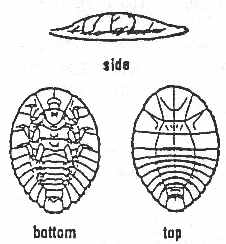
A water penny is characterized by its flat, oval appearance. The immature beetle usually also has a raised byuump on one side and 6 tiny legs and fluffy gills on the other side. It functions as a collector.
Riffle Beetle (adult)- Order Coleoptera
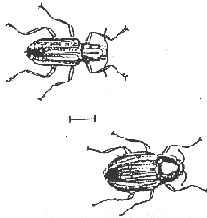
The adult is very tiny, only about 1/4" long, with 6 legs and antennae. The body is covered with tiny hairs and the legs usually have small hooks on the end for latching onto rocks.
Mayfly Nymph - Order Ephemeroptera
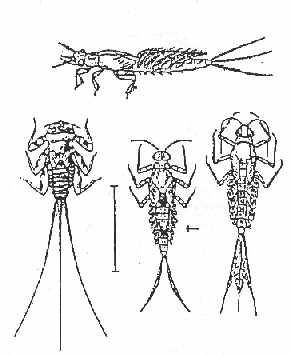
The identifying features of the mayfly larva include 3 tails (sometimes 2) and abdominal gills. The larva may be collectors, scrapers, or predators.
Stonefly Nymph - Order Plecoptera
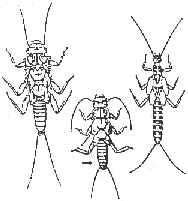
Stoneflies can be identified by their 6 prominent legs, 2 tails, and elongated bodies. Unlike mayflies, these larva have no abdominal gills. Stoneflies may be shredders, predators or collectors.
Dobsonfly Larva (Hellgrammite) - Order Megaloptera

The dobsonfly is a predator which uses its lateral spines to secure itself between rocks and and wait for prey to come within range of their powerful mandibles.
Gilled Snail - Class Gastropoda
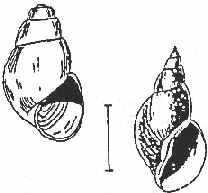
The shell opening of the gilled snail is usually covered with a thin plate. When the opening is facing you, the shell usually opens to the right.
Non-net spinning Caddisfly Larva - Order Tricoptera
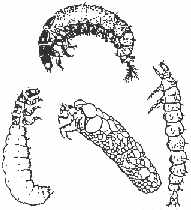
These caddisfly larva often build cases of small pebbles, leaves or bits of sticks, attach them to rocks and wait for food to appear. They may be collectors or predators. Most often these larva are found in their cases with only the heads protruding.
The next group is moderately sensitive organisms.
| High Sensitivity | Moderate Sensitivity | Low Sensitivity |
For general information and descriptions of macro invertebrates view or download What are Macros?
Identification and classification manuals are available. For a listing of various sources please go to Resources.